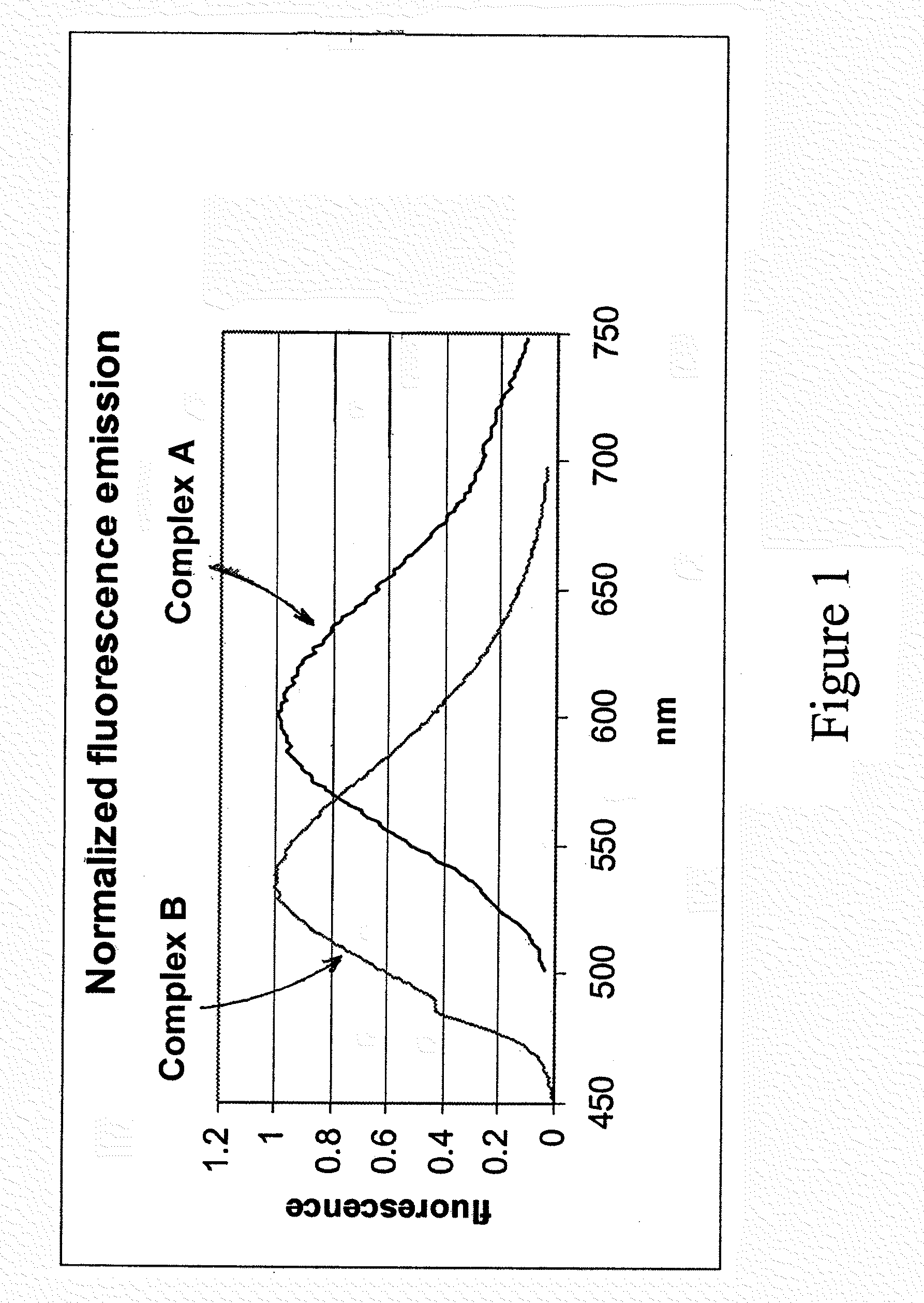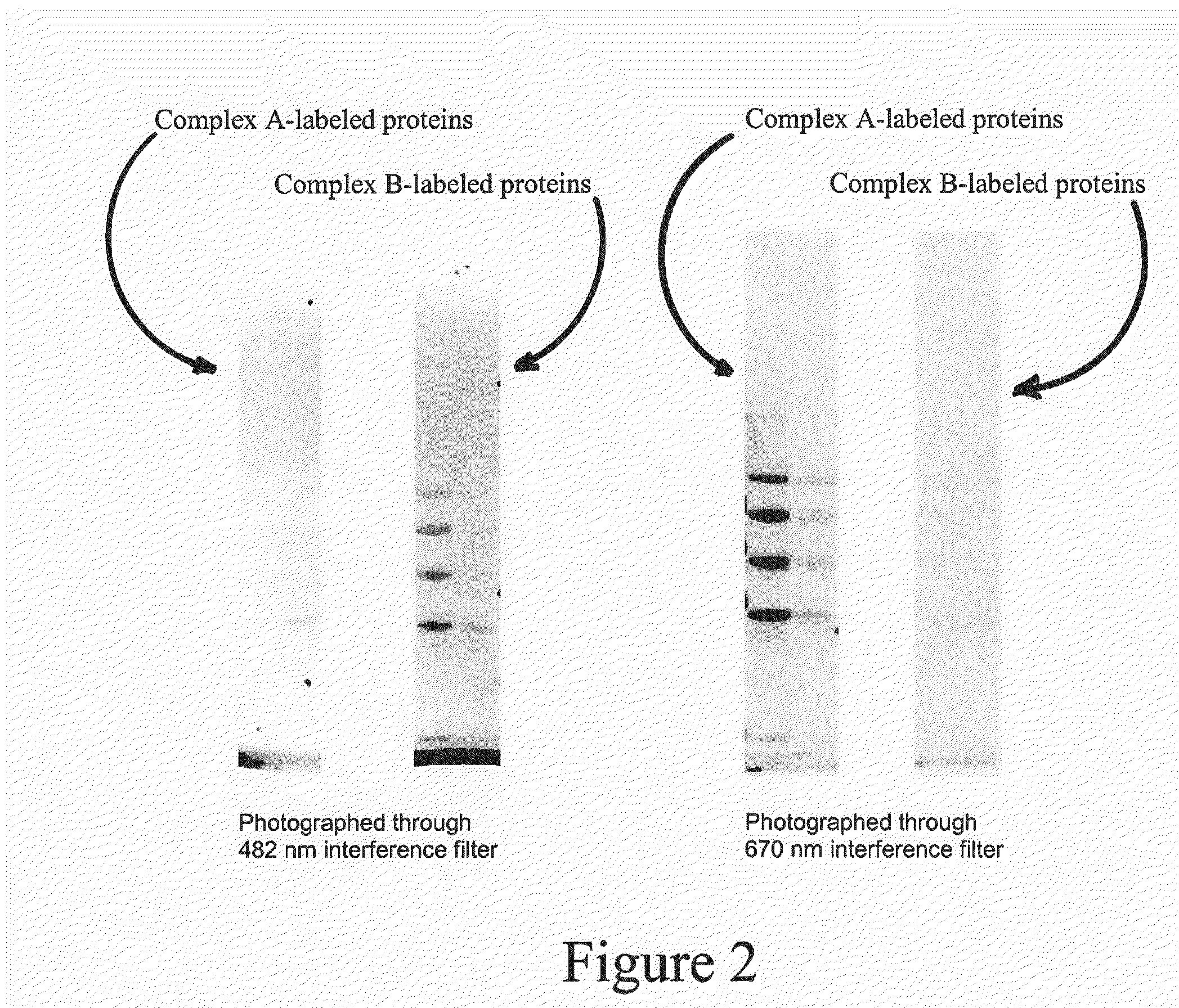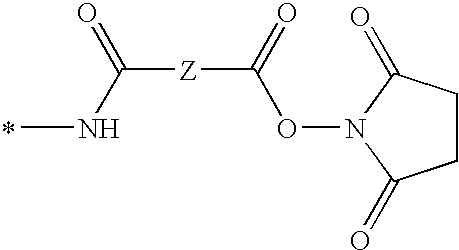Cyclometalated transition metal complexes for multiplex analyte detection
a transition metal complex and multiplex analyte technology, applied in triarylamine dyes, instruments, indium organic compounds, etc., can solve the problems of unoptimized image of fluorescent labels with uv excitation, improve the ease of bonding of reactive groups, and improve the ease of when
- Summary
- Abstract
- Description
- Claims
- Application Information
AI Technical Summary
Benefits of technology
Problems solved by technology
Method used
Image
Examples
examples
[0075]The following examples are representative of the preparation and use of complexes of this invention. The invention is far broader than these examples, however, and extends to the use of other complexes, spacers, ligands, functional groups and types of molecules that may be labeled using the complexes, as expressed in the claims.
[0076]Syntheses of Complexes A and B: Complexes A and B, shown below, are similar in structure, with a similar charge, size and solubility. These similarities afford complexes A and B, and labeled biomolecules to which these complexes are bound, a similar electrophoretic mobility or chromatographic behavior. They each bear an amine-reactive N-hydroxysuccinimide ester group separated from the luminescent group by a 5-carbon linker (derived from adipic acid). In Complex A the donor ligands are unsubstituted whereas in Complex B they are substituted with four fluorine atoms.
Synthesis of Complex A
1. Synthesis of methyl 5-(1,10-phenanthrolin-5-ylcarbamoyl)pe...
PUM
 Login to View More
Login to View More Abstract
Description
Claims
Application Information
 Login to View More
Login to View More - R&D
- Intellectual Property
- Life Sciences
- Materials
- Tech Scout
- Unparalleled Data Quality
- Higher Quality Content
- 60% Fewer Hallucinations
Browse by: Latest US Patents, China's latest patents, Technical Efficacy Thesaurus, Application Domain, Technology Topic, Popular Technical Reports.
© 2025 PatSnap. All rights reserved.Legal|Privacy policy|Modern Slavery Act Transparency Statement|Sitemap|About US| Contact US: help@patsnap.com



